In 2022, Germany was facing its biggest challenge yet as far as its energy policies are concerned: within the space of a few months, landmark decisions had to be rolled back and new ones made in order to ensure the country’s energy security now and in the future. At an unprecedented pace, our country reduced its decades-long dependence on Russian pipeline gas and placed its energy supply on a new and broader basis.
Reducing independence
Germany needs to diversify its gas supply within a very short period of time through alternative import options. In 2021, more than 50% (around 46 billion cubic metres) of natural gas was procured from Russia via pipelines. Within a few months, dependence on Russian pipeline gas was eliminated in 2022. Supplies from Norway, the Netherlands and Belgium are now replacing Russian gas.
On behalf of the German Federal Government, KfW is supporting energy security projects to feed Liquefied Natural Gas (LNG) into Germany’s gas transmission network and natural gas storage systems as quickly as possible. LNG is deep-frozen under pressure, transported in liquid form by ship, landed, heated, regasified and then pumped into the networks.
In May 2022, there were 41 LNG terminals in operation throughout Europe, able to process up to 241 billion cubic metres of natural gas liquids. There are currently plans for a further 32 terminals throughout Europe, including the projects in Germany. To replace Russian natural gas in the short long-term, Germany required at least four new terminals to meet its gas demand, which amounted to 95 billion cubic metres in 2021 alone.
LNG terminals
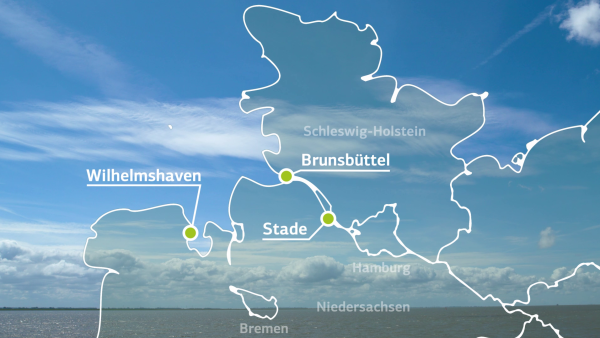
LNG terminal locations
The German Federal Government initially identified Brunsbüttel, Stade and Wilhelmshaven as the sites for the three LNG terminals. Later, Lubmin at the Baltic Sea was named as a further site.
In spring 2022, the Federal Government decided that the three ports of Brunsbüttel, Stade and Wilhelmshaven would initially be the best locations for LNG terminals.
However, in line with German climate targets, the permits for the new LNG terminals will be limited to 31 December 2043. Further operation of the terminals beyond this time will be permitted only for carbon-neutral hydrogen and its derivatives (such as ammonia). This is intended to ensure the goal of carbon neutrality in Germany can be achieved by 2045 at the latest.
Brunsbüttel
_rs_text_image_landscape_small.jpg)
Brunsbüttel LNG terminal
The first drawings for the construction of an LNG terminal have been in existence since 2011. Now a terminal at Elbehafen port in Brunsbüttel is set to be built within only three years.
Brunsbüttel's port is situated near the confluence of the Kiel Canal and the Elbe river. A high-capacity terminal will be built here by 2027, that will initially process natural gas liquids, followed by green hydrogen for Germany’s energy supply. KfW is participating in a consortium for the construction of the proposed LNG terminal in Brunsbüttel together with the German energy group RWE and the Dutch gas network operator Gasunie.
The location of the site is almost ideal for this ambitious project. The LNG tankers from export regions such as North America, Australia, North Africa and the Gulf States can dock here at two jetties.
One part will continue its onward journey in liquid form by bunker ship, tanker or railway. The other part is regasified, i.e. heated and compressed. The gas will then initially flow into the long-distance gas network via a short pipeline.
In addition, a further pipeline around 55 kilometres long will be built to Hamburg, for which the LNG Acceleration Act passed by the Bundestag this year will be applied for the first time. This will considerably speed up the lengthy approval processes that used to be the norm.
In Brunsbüttel, fossil-free subsequent utilisation is also being considered and planned in advance. It is stipulated that from the end of 2043, continued operation will only be permitted for climate-neutral hydrogen and its derivatives.
Wilhelmshaven and Stade
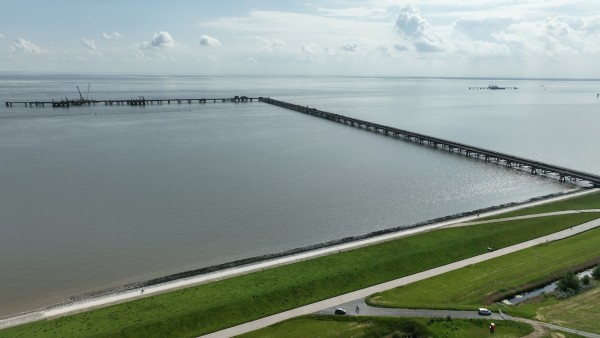
Wilhelmshaven
After the first piles were driven in May 2022, a stationary berth for a floating terminal and the fixed terminal will be built in Wilhelmshaven-Hooksiel, which will go into operation three years from now.
In addition to Brunsbüttel, plans for two further LNG terminals in the two ports of Wilhelmshaven and Stade in the State of Lower Saxony are also in full swing.
The proposed LNG terminal in Wilhelmshaven is expected to process at least 10 billion cubic metres of natural gas liquids per year from 2025/26. In Stade, the private consortium Hanseatic Energy Hub (HEH) expects an annual capacity of more than 13 billion cubic metres of LNG. Together, this would account for a good 25 per cent of Germany’s gas requirements, which could then be met with LNG.
Floating LNG terminals
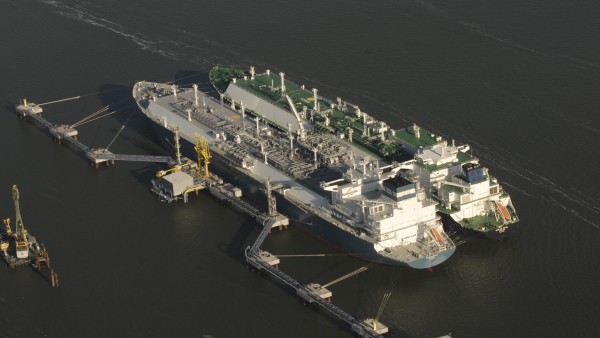
FSRU
This special ship (left) can unload liquefied LNG from the tankers, store it and regas it for direct feeding into the gas transmission network.
With the fixed LNG terminals only able to process the first natural gas liquids in a few years' time, Germany has had to secure an urgently needed interim solution that is much quicker to implement in the form of five floating terminals – known as Floating Storage and Regasification Units (FSRU).
Each of the five special ships, which are around 300 metres long, is able to take on 170,000 cubic metres of LNG from tankers in a single unloading process, transfer it to a gaseous state on board and then feed it into the gas transmission network.
The two floating terminals in front of Brunsbüttel and Wilhelmshaven will be operated temporarily by RWE and Uniper until a special-purpose company takes over operation. ENBW, i.e. its subsidiary VNG – alongside RWE and Uniper – are responsible for supplying the FSRUs. For the floating terminals to contribute as much as possible, their capacity must be fully utilised from the point of commissioning.
With an annual regasification capacity of up to 12.5 billion cubic metres, the terminals offer a direct opportunity to procure LNG for the German market from (at present) 20 countries that cannot be reached by gas pipelines. The terminals therefore increase the security of supply for Germany and contribute to greater independence from previous pipeline-bound natural gas imports.
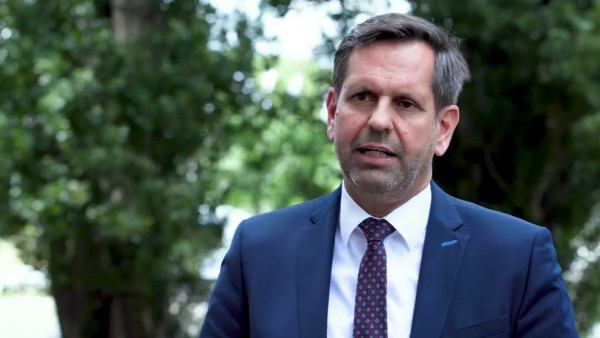
Olaf Lies
Minister President of Lower Saxony (then Environment Minister)
Lower Saxony’s Minister President Olaf Lies was convinced early on that the first LNG would flow into the long-distance gas grid and into the gas storage facilities before the turn of the year 2022/23.. However, the already approved pipeline measuring approx. 26 kilometres in length from Wilhelmshaven to the next feed-in point of the Norddeutsche Erdgas-Transversale (NETRA) pipeline near Friedeburg-Etzel needed to be completed first.
In future, up to 20 billion cubic metres of gas per year could be transported via this pipeline.
In the past, such a project often took up to eight years from start to commissioning – this time it took only ten months.
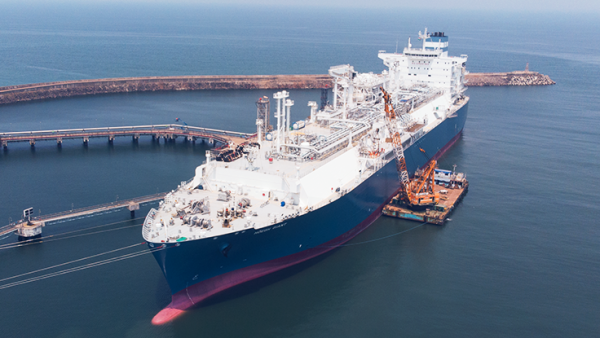
“Höegh Gannet”
The "Gannet", chartered by RWE from the Norwegian shipping company Höegh, has been permanently anchored at the port of Brunsbüttel as an FSRU since January 2023 and processes the delivered LNG for the long-distance gas grid.
In Brunsbüttel, the connection between the FSRU, the "Höegh Gannet", and the comparatively short pipeline of the Schleswig-Holstein Netz (SH Netz) into the long-distance gas grid was opened on 20 January 2023.
Six days earlier, on 14 January 2023, the second FSRU, the "Neptune", chartered and operated by Deutsche ReGas and TotalEnergies was commissioned off Lubmin (Mecklenburg-Western Pomerania).
In addition, the fourth floating terminal, the "Energos Force", has been available at the port of Stade on the Elbe since March 2024. The operator is HEH.
Another FSRU will be moored off Wilhelmshaven. This fifth special ship, the "Excelerate Excelsior", has a capacity of at least 5 billion cubic metres per year and is scheduled to go into operation in spring 2024. Excelerate, the owner of the vessel, will provide the FSRU to the consortium of companies TES/E.ON/Engie and will operate it technically and provide other necessary services.
Together with the Belgian company Tree Energy Solutions (TES) and in cooperation with Niedersachsen Ports (N-Ports), Uniper intends to further expand the Wilhelmshaven Energy Hub and increasingly focus on green ammonia. A study has already been commissioned for a new jetty for future onshore energy import terminals operated by TES and Uniper. According to the study, a new jetty with at least six berths is planned.
The aim is to operate the FSRU with LNG landings at the Wilhelmshaven site only until the hydrogen terminal for green gas is commissioned; according to information from TES, this is expected to be the case as early as 2025.
Natural gas storage
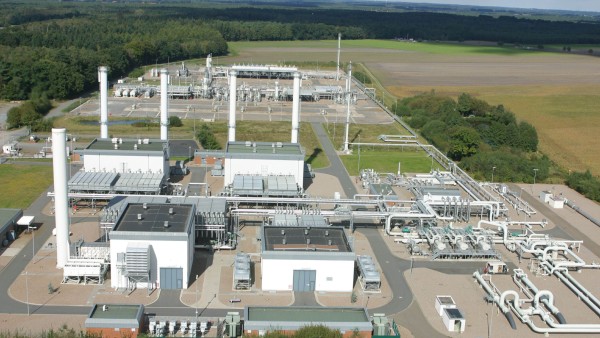
Gas storage tank at Rehden
The largest gas storage facility in Western Europe is located below ground in the Lower Saxony town of Rehden. The Astora plant was initially placed under the trusteeship of Securing Energy for Europe (SEFE, formerly Gazprom Germania) in June 2022 and will pass into the ownership of the federal government at the end of the year. To maintain the security of supply in Germany, SEFE has a credit line in the billions from KfW.
In addition to the injection of LNG into the long-distance gas grid, the storage of gas is of particular importance for Germany's energy security. All German gas storage facilities together have the capacity to supply the whole of Germany with gas for about two to three months. To do this, however, the huge storage facilities must be at least 95 per cent full of gas by 1 November. As early as mid-October 2022, this target was achieved and even exceeded.
This meant that gas could be released from the storage facilities into the market as planned during the winter, in line with the legally prescribed withdrawal path: storage levels may fall to a maximum of 40 percent in February 2023. In mid-February 2023, the average storage levels were still just over 70 percent.
On behalf of the German Federal Government, KfW has provided Trading Hub Europe GmbH (THE), a consortium of eleven German gas transmission system operators, with a credit line in the double-digit billions to ensure that the gas storage facilities are filled. This will provide THE with the liquidity it needs to purchase extremely large quantities of gas and inject them into the networks and storage facilities. The loan is secured by a guarantee from the Federal Government. This financial coverage was urgently needed in the particularly critical situation on the gas market in the summer of 2022 in order to fill the storage facilities as high as possible by the autumn.
Published on KfW Stories: 22 August 2022, updated on 20 May 2025.
The described project contributes to the following United Nationsʼ Sustainable Development Goals
Goal 9: Build resilient infrastructure, promote sustainable industrialization and foster innovation
Non-existent or dilapidated infrastructure hinders economic efficiency and thus engenders poverty. When building infrastructure, the focus should be on sustainability, for example, by promoting environmentally-friendly means of transport. Factories and industrial facilities should also ensure that production is in line with ecological aspects to avoid unnecessary environmental pollution.
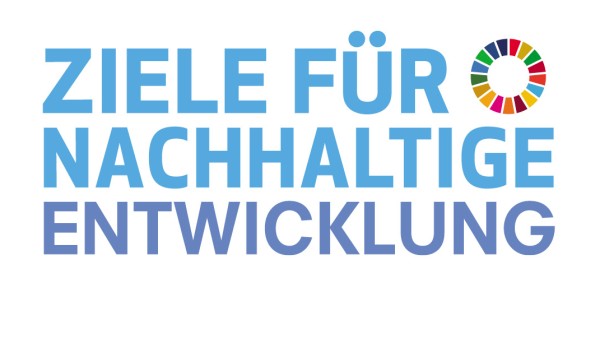

All United Nations member states adopted the 2030 Agenda in 2015. At its heart is a list of 17 goals for sustainable development, known as the Sustainable Development Goals (SDGs). Our world should become a place where people are able to live in peace with each other in ways that are ecologically compatible, socially just, and economically effective.

_rs_stage_small.jpg)
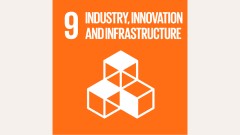

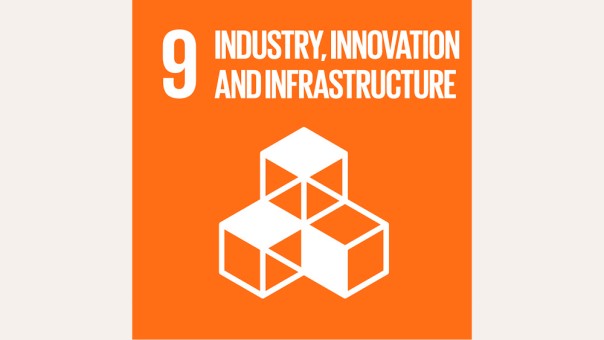

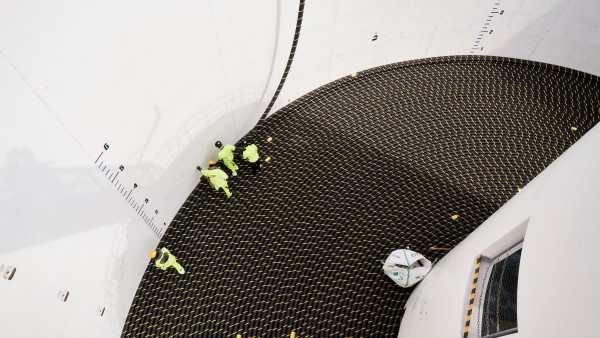
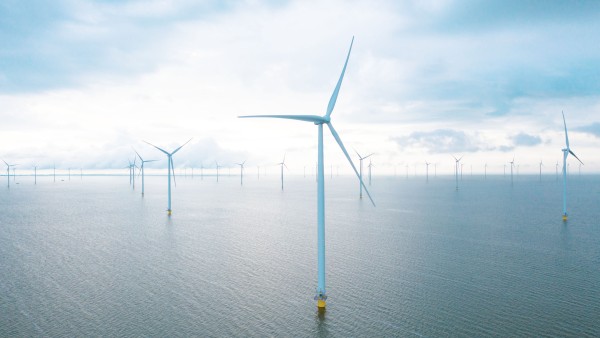
Data protection principles
If you click on one of the following icons, your data will be sent to the corresponding social network.
Privacy information